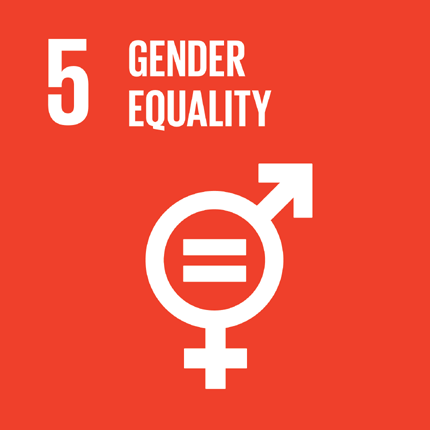sdg5
SUSTAINABLE DEVELOPMENT GOAL 5
Achieve gender equality and empower all women and girls
Progress of goal 5
- Gender equality and women’s empowerment have advanced in recent decades. Girls’ access to education has improved, the rate of child marriage declined and progress was made in the area of sexual and reproductive health and reproductive rights, including fewer maternal deaths. Nevertheless, gender equality remains a persistent challenge for countries worldwide and the lack of such equality is a major obstacle to sustainable development.
- Assuring women’s rights through legal frameworks is a first step in addressing discrimination against them. As of 2014, 143 countries guaranteed equality between men and women in their constitutions; another 52 countries have yet to make this important commitment. In 132 countries, the statutory legal age of marriage is equal for women and men, while in another 63 countries, the legal age of marriage is lower for women than for men.
- Violence against women and girls violates their human rights and hinders development. Most such violence is perpetrated by intimate partners, with available data from surveys conducted between 2005 and 2015, in 52 countries, (including only one country from the developed regions) indicating that 21 per cent of girls and women aged between 15 and 49 experienced physical and/or sexual violence at the hands of an intimate partner in the previous 12 months. Estimates on the risks of violence experienced by women with disabilities, women from ethnic minorities and among women above the age of 50 are not yet included, owing to data limitations. Additionally, human trafficking disproportionately affects women and girls, since 70 per cent of all victims detected worldwide are female.
- Globally, the proportion of women aged between 20 and 24 who reported that they were married before their eighteenth birthday dropped from 32 per cent around 1990 to 26 per cent around 2015. Child marriage is most common in Southern Asia and sub-Saharan Africa, with 44 per cent of women married before their eighteenth birthday in Southern Asia and 37 per cent of women married before their eighteenth birthday in sub-Saharan Africa. The marriage of girls under the age 15 is also highest in those two regions, at 16 per cent and 11 per cent, respectively. Social norms can and do change, however, with the rate of marriage of girls under the age of 15 declining globally from 12 per cent around 1990 to 7 per cent around 2015, although disparities are found across regions and countries. The most rapid reduction in child marriage overall was recorded in Northern Africa, where the percentage of women married before the age of 18 dropped by more than half, from 29 per cent to 13 per cent, over the past 25 years.
- The harmful practice of female genital mutilation/cutting is another human rights violation that affects girls and women worldwide. While the exact number of girls and women globally who have undergone the procedure is unknown, at least 200 million have been subjected to the procedure in 30 countries with representative prevalence data. Overall, rates of female genital mutilation/cutting have been declining over the past three decades. However, not all countries have made progress and the pace of decline has been uneven. Today, in the 30 countries, for which data were available, around 1 in 3 girls aged 15 to 19 have undergone the practice, versus 1 in 2 in the mid-1980s.
- In every region, women and girls do the bulk of unpaid work, including caregiving and such household tasks as cooking and cleaning. On average, women report that they spend 19 per cent of their time each day in unpaid activities, versus 8 per cent for men. The responsibilities of unpaid care and domestic work, combined with paid work, means greater total work burdens for women and girls and less time for rest, self-care, learning and other activities.
- Globally, women’s participation in parliament rose to 23 per cent in 2016, representing an increase by 6 percentage points over a decade. Slow progress in this area is in contrast with more women in parliamentary leadership positions. In 2016, the number of women speakers of national parliaments jumped from 43 to 49 (out of the 273 posts globally); women accounted for 18 per cent of all speakers of parliament in January 2016.
Source: United Nations, Department of Economic and Social Affairs, SUSTAINABLE DEVELOPMENT KNOWLEDGE PLATFORM
The National Indicators for Sustainable Development Goal 5 are:
- Proportion of women in managerial positions (%)
- Gender Empoyment Gap
- Inactive population due to caring responsibilities by sex (%)
- Early leavers from education and training by sex (%)
- Tertiary educational attainment by sex (%)
- Employment rates of recent graduates by sex (%)
All available data in .xls file:
- Gender equality
Last Updated: 7/5/2025
EU SDG indicator set
To measure SDG achievement in an EU context, an EU SDG indicator set was developed under the leadership of Eurostat. The purpose of this set, which is structured along the 17 global Sustainable Development Goals, is to monitor progress towards the SDGs at the European level.
- For the complete set of indicators available in the Eurostat database, click here.
- To compare Greece’s progress on specific indicators for each Sustainable Development Goal, click here [data visualisation].

